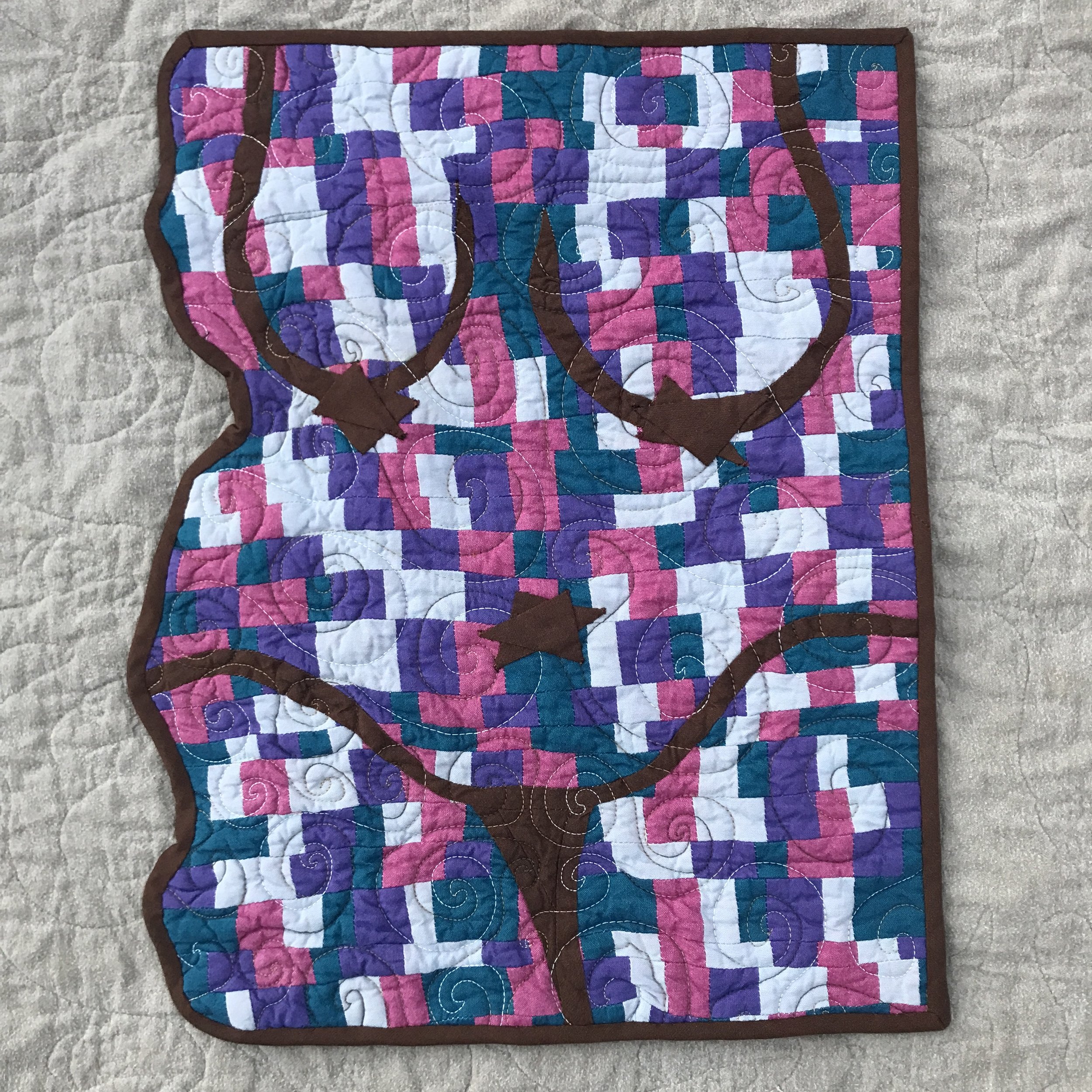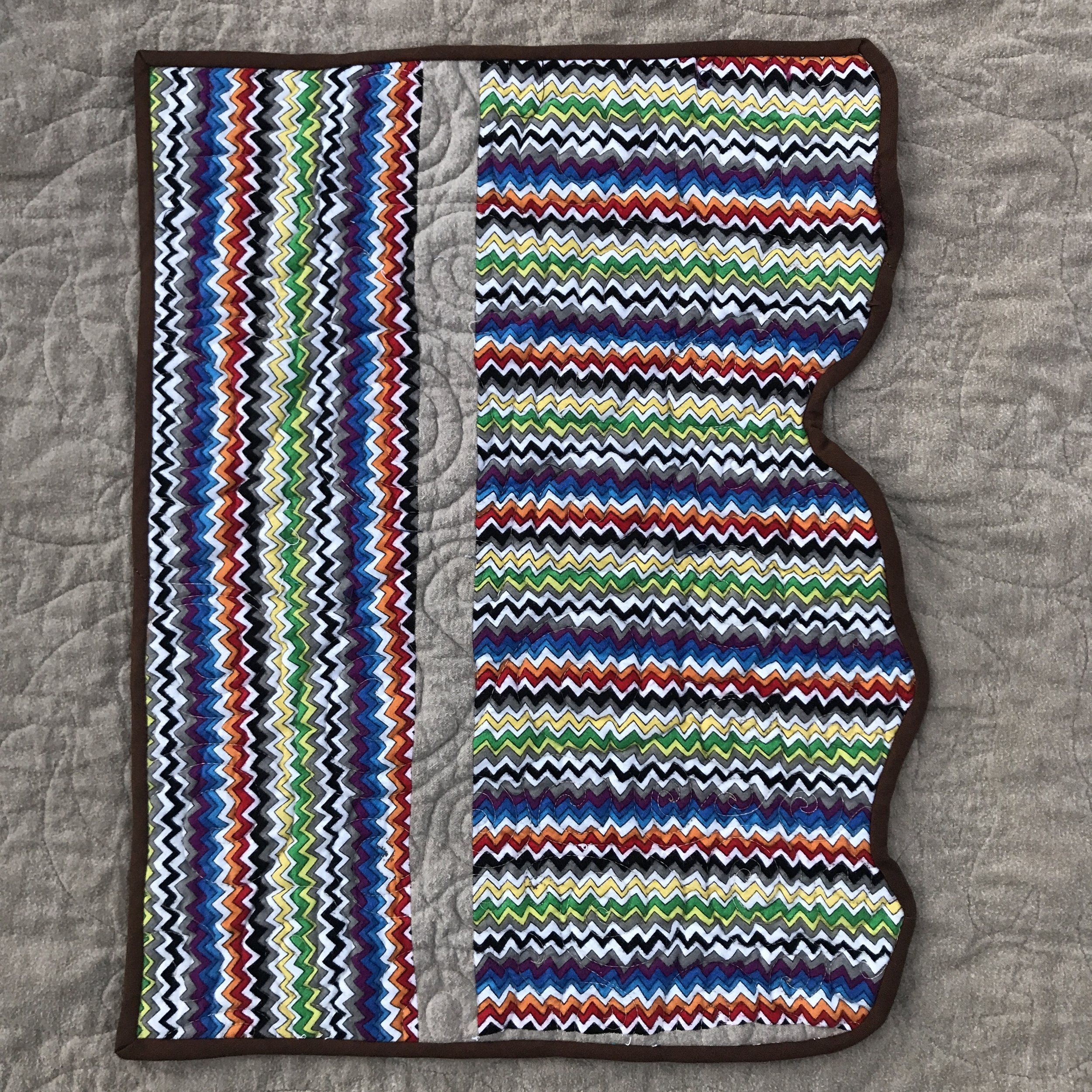Navel of God
Rebecca Cynamon-Murphy
“... the body of the parent as celestial nursery.”
Interview by L. Valena
October 26, 2021
Can you start by telling me about the prompt that you responded to?
It was a poem called Lancestronaut. I assume that there was an actual child that inspired this poem. It’s a beautiful extended metaphor. Children are so hard to put a finger on when you’re focused on the miracle, and when they’re babies that’s so easy. It communicates that inability to pin down what a child is, by using every kind of cosmological image. I don’t read poetry for fun, but I’m certainly trained in it, so it was that exercise that you don’t normally get to do.
What happened next?
The phrase ‘navel of god’ caught me. I just finished a giant piece, it’s this big fat nude -- it’s wonderful. And I’ve had in my brain for awhile that there’s this part of the feminine anatomy that doesn’t get enough attention, which is the curve of the belly. We get these Rubinesque figures that are all stretched out, but for actual women looking in the mirror, we have this flopover. Sometimes it’s called a FUPA. It can be very beautiful. The community I work in is the modern quilt community. My local guild it wonderful, but on the national level they really mean mid-century modern. There’s only so much geometric work I want to do. So almost as a “fuck you, here it comes,” I’ve thought about exploring that thin line of the FUPA, and reducing that to minimalism. I work so slow, because I have little kids, so I keep making lists of quilts to make. So I pictured this giant one. I think it was the year that none of my quilts got into the annual show, and this one woman got in five quilts that were all white with some black lines. I got to thinking what I would do with a line. I would do the FUPA.
So the navel of god, that phrase in this poem, pulled back that image for me. Because that navel, in that line across a canvas, is what identifies it as what it is. That brought that idea back. And then it was just a matter of realizing the vision. The same national guild does challenges, and they’ll send you a pack of fabric, and you have to make something with just that. This year they clearly brought in a new line of base fabrics, and they’re beautiful. It worked.
It’s a smaller scale than I thought it would be, and it’s not just the line, but because I’m responding to the poem, and the poem has so many celestial aspects, it seemed important to include the full nude line. So boobs too – it’s part of it. Because the poem describes this child, and because the child is so insubstantial in the poem, I didn’t want to make the child concrete. So I didn’t make an image of a beautiful little baby.
In that way, do you think your piece is more about the potential of a baby? Or the process of having a baby?
I think it’s about the body of the parent as celestial nursery. For me, that is a postpartum body. I’ve kept my postpartum body, and that’s just fine with me. I think it’s a little less fixed in time, before/after/potential/discarded vessel. I think it’s much more present and nourishing. The nursery is much more than giving birth. The nursery is where it all takes place. I have three kids, they are ten, eight and six. There is that beautiful baby phase. And then... I look at my six year old all the time, and say, “your dad’s right there. Ask your dad!” They all do it. They’re like, “nah, I’ll wait for mom.” I feel terrible, because he’s the perfect co-parent. None of the old jokes apply to him. And still they’re like [grabby gestures] “I want to be next to you!”
They used to be part of your body, right? I mean, that’s what’s so surreal about the whole thing. I think it’s easy for people like me, who don’t have kids, to forget how physical it is. It seems so theoretical.
Right. And birth itself is a little bit violent. My husband took pictures of the first birth, and those are in like a secret vault. I don’t need to see those as they come up on shuffle on my screen saver! I was born in 1977. My dad was in the room, and he was the first one to hold me. My mom says that the nurses were just aghast. In the army, he wasn’t trained as a midwife, but he was trained so that if some officer’s wife started giving birth in the ambulance, he would be able to catch it! I found the certification, and it just said, ‘competent’. So he had just a little bit of training. In the seasons of what we know about the golden hour, of keeping the baby skin to skin, and those kinds of things, the connection is just so funny. Navel of God, navel to navel. There’s a continuity to it that’s really interesting.
Is there anything technical you want to talk about? In your email you mentioned that you used bias tape for piecing... is there anything you want to say about that?
It’s just something I’ve been playing with. I am a terrible elitist bitch, and I have this weird sense (and I know that it’s not true) that’s it’s not a quilt if the images are laid on top. That all decoration should be pieced. And I know that it’s totally wrong. It’s wrong historically. It’s wrong when you think about how everyone’s creative process is different. So for me personally, I’m always trying to figure out how to do curves. How to do the things that only seem possible with applique.
I have been playing with bias tape. There were a few people playing with it a few years ago, on top of quilts. Making loops and stuff. I started there, but then I realized that I could try using it inside the quilt. So I’ve been playing with that. And I guess because I’m not really vocal, my guild members were like, “Really? I’ve never thought of that!” I’m kind of just figuring it out for myself. I like making bias tape, which is useful.
Good for you! I would never sign myself up for that willingly. Do you have any advice for another artist who is approaching this project for the first time?
Make it a practice in achievable goals, because we all need that. We need to create success for ourselves, to motivate ourselves because most of us are depressed and anxious. As we’re all learning about growth mindsets and neuroplasticity, and all of that, it’s a great exercise in setting achievable goals and creating success for ourselves, which is a new synapse that we can then keep using.
Call Number: Y63PP | Y66VA.cyNa
Rebecca Cynamon-Murphy is a fat-lady Jewish artist in Wheaton IL who makes quilts, tends the hearth, and mends the world in equal measures. Her training has included educational policy & methods and community development & justice work. Self-taught in design & construction, her textile art tends toward themes of body liberation and mental health.






